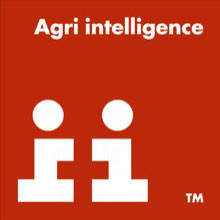Surveying of apple orchards across England by Agrii advisers and researchers has revealed a shift in sensitivity to some of the fungicides commonly used to control apple scab (Ventureia inaequalis).

The findings do not suggest widespread resistance, but rather the need for effective product stewardship if crops are to be adequately protected in future seasons, explained Don Pendergrast, Agrii technical manager for non-combinable crops, who oversaw the study.

Fruit Agronomist
Notable observations include a shift in the sensitivity of apple scab isolates to captan and dithianon, two enzyme inhibitors with multi-site activity that are the cornerstone of most programmes.
Captan can be applied up to 10 times per year and dithianon up to six. The Fungicide Resistance Action Committee (FRAC) deems both to be of low risk to resistance, although reduced sensitivity has been reported in isolates subjected to reduced rates in laboratory tests.
The findings provide learnings that will be of value to growers, says Dr Pendergrast, but cautions that if ignored, the reduced protection would result in poorer disease control and a consequential drop in crop quality.
“Changes in fungicide sensitivity among apple scab isolates have been reported across Europe, New Zealand and North America, so it was important to assess the situation in England. Although worrying, the findings also show it can be managed effectively,” says Dr Pendergrast.
“The positive finding is that where resistance management is practiced to a high standard, it is possible to adequately protect crops and preserve fungicide efficacy,” he adds.
Agrii worked with the Food & Environment Research Agency (FERA) in each year of the survey (2021, ’22, and ’23) to assess fungicide performance against a baseline dose. Notable shifts in sensitivity were also seen with trifloxystrobin and pyrimethanil, but at varying frequencies.
Key points
- Analysis of isolates collected by Agrii has shown a reduction in fungicide sensitivity to fungicides used to control apple scab
- Notably, this includes captan and dithianon, two multisites that FRAC considers at low risk of resistance developing
- Good resistance management practices like alternating modes of action in programmes will slow down or reverse the loss of sensitivity

The reduced sensitivity of captan varied between sites but was consistent across all seasons, and the reduction in sensitivity to dithianon was close to that of pyrimethanil but was more frequent.
Moderate reductions in sensitivity were recorded for fluxapyroxad and difenconazole, while no change in sensitivity was observed with mefentrifluconazole or the biological fungicide potassium phosphonates.
To perform the analysis, leaf samples were collected at the end of the season but ahead of leaf fall. Greater shifts in sensitivity were observed in more restricted programmes, while sites that followed more expanded programmes where modes of action were routinely alternated between applications recorded the smallest shifts in sensitivity.
For Ryan Williams, Agrii agronomist and participant in the survey, the findings illustrate the need for responsible product stewardship when devising fungicide programmes.
“The reduced performance of captan especially shows that it is no longer acceptable to use products with multi-site activity alone or in sequential applications. While some growers and advisers are already practicing good stewardship, the industry needs to understand the significance of these results.
Fortunately, we do not have a clonal population of V. inaequalis otherwise sensitivity shifts would be permanent. This means it is possible to manage those less sensitive isolates effectively by mixing and rotating active substances. We could see evidence of this in the survey,” Mr Williams says.
“The positive finding is that where resistance management is practiced to a high standard, it is possible to adequately protect crops and preserve fungicide efficacy,” he adds.


